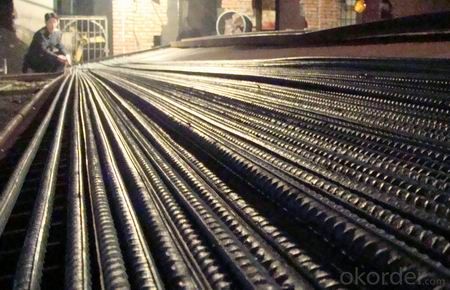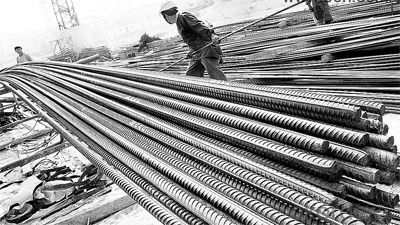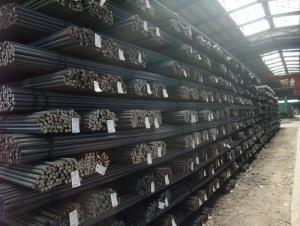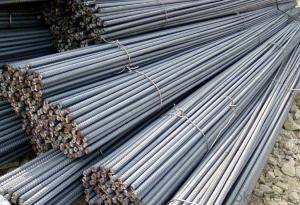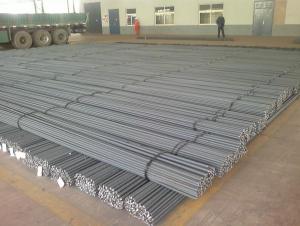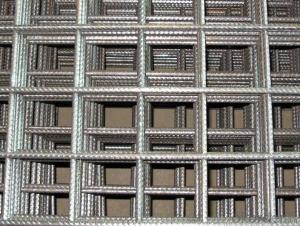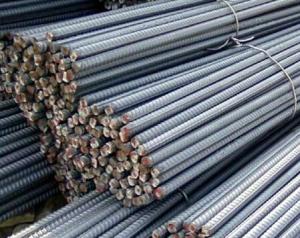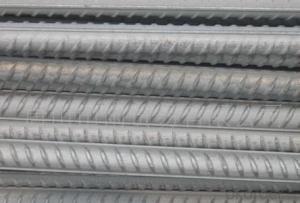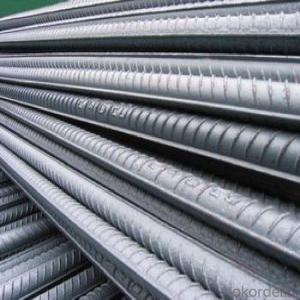6mm*28.27mm deformed steel bar deformed steel bar
- Loading Port:
- Tianjin
- Payment Terms:
- TT or LC
- Min Order Qty:
- 25 m.t.
- Supply Capability:
- 100000 m.t./month
OKorder Service Pledge
OKorder Financial Service
You Might Also Like
Product Description:
OKorder is offering 6mm*28.27mm deformed steel bar deformed steel bar at great prices with worldwide shipping. Our supplier is a world-class manufacturer of steel, with our products utilized the world over. OKorder annually supplies products to European, North American and Asian markets. We provide quotations within 24 hours of receiving an inquiry and guarantee competitive prices.
Product Applications:
6mm*28.27mm deformed steel bar deformed steel bar are ideal for structural applications and are widely used in the construction of buildings and bridges, and the manufacturing, petrochemical, and transportation industries.
Product Advantages:
OKorder's deformed steel bar are durable, strong, and resist corrosion.
Main Product Features:
· Premium quality
· Prompt delivery & seaworthy packing (30 days after receiving deposit)
· Corrosion resistance
· Can be recycled and reused
· Mill test certification
· Professional Service
· Competitive pricing
Product Specifications:
Specifications of Deformed Steel Bar:
Standard | GB | HRB335, HRB400, HRB500 | |
UK | G460B, B500A, B500B,B500C | ||
USA | GR40, GR60 | ||
Diameter | 6mm,8mm,10mm,12mm,14mm,16mm,18mm,20mm, 22mm,25mm,28mm,32mm,36mm,40mm,50mm | ||
Length | 6M, 9M,12M or as required | ||
Place of origin | China mainland | ||
Application | building,construction,road,bridge etc | ||
Brand name | DRAGON | ||
Theoretical weight and section area of each diameter as below for your information:
Diameter(mm) | Section area (mm²) | Mass(kg/m) |
6 | 28.27 | 0.222 |
8 | 50.27 | 0.395 |
10 | 78.54 | 0.617 |
12 | 113.1 | 0.888 |
14 | 153.9 | 1.21 |
16 | 201.1 | 1.58 |
18 | 254.5 | 2.00 |
20 | 314.2 | 2.47 |
22 | 380.1 | 2.98 |
25 | 490.9 | 3.85 |
28 | 615.8 | 4.83 |
32 | 804.2 | 6.31 |
36 | 1018 | 7.99 |
40 | 1257 | 9.87 |
50 | 1964 | 15.42 |
Usage and Applications of Deformed Steel Bar:
Deformed bar is widely used in buildings, bridges, roads and other engineering construction. Big to highways, railways, bridges, culverts, tunnels, public facilities such as flood control, dam, small to housing construction, beam, column, wall and the foundation of the plate, deformed bar is an integral structure material. With the development of world economy and the vigorous development of infrastructure construction, real estate, the demand for deformed bar will be larger and larger..
Packaging & Delivery of Deformed Steel Bar:
Packaging Detail: products are packed in bundle and then shipped by container or bulk vessel, deformed bar is usually naked strapping delivery, when storing, please pay attention to moisture proof. The performance of rust will produce adverse effect.
Each bundle weight: 2-3MT, or as required
Payment term: TT or L/C
Delivery Detail: within 45 days after received advanced payment or LC.
Label: to be specified by customer, generally, each bundle has 1-2 labels
Trade terms: FOB, CFR, CIF
Deformed Steel Bar in Coil
Produce Line of Deformed Steel Bar
Note:
1. Our products are produced according to national standard (GB), if not, supply according to national standards (GB) or agreement as customer required.
2. Other Grade and Standard Deformed Steel Bar we can supply:
Grade: GR40/GR60, G460B/B500A/B500B/B500C,BST500S
Standard: ASTM, BS, DIN
The Minimum Order Quantity of these products is high, and need to be confirmed.
3. We can not only supply Deformed Steel Bar; if you need anything about building materials, please contact us for further information.
4. Please send us your detail specifications when inquire. We will reply to you as soon as possible. We sincerely hope we can establish a long stable business relationship
FAQ:
Q1: Why buy Materials & Equipment from OKorder.com?
A1: All products offered byOKorder.com are carefully selected from China's most reliable manufacturing enterprises. Through its ISO certifications, OKorder.com adheres to the highest standards and a commitment to supply chain safety and customer satisfaction.
Q2: How do we guarantee the quality of our products?
A2: We have established an advanced quality management system which conducts strict quality tests at every step, from raw materials to the final product. At the same time, we provide extensive follow-up service assurances as required.
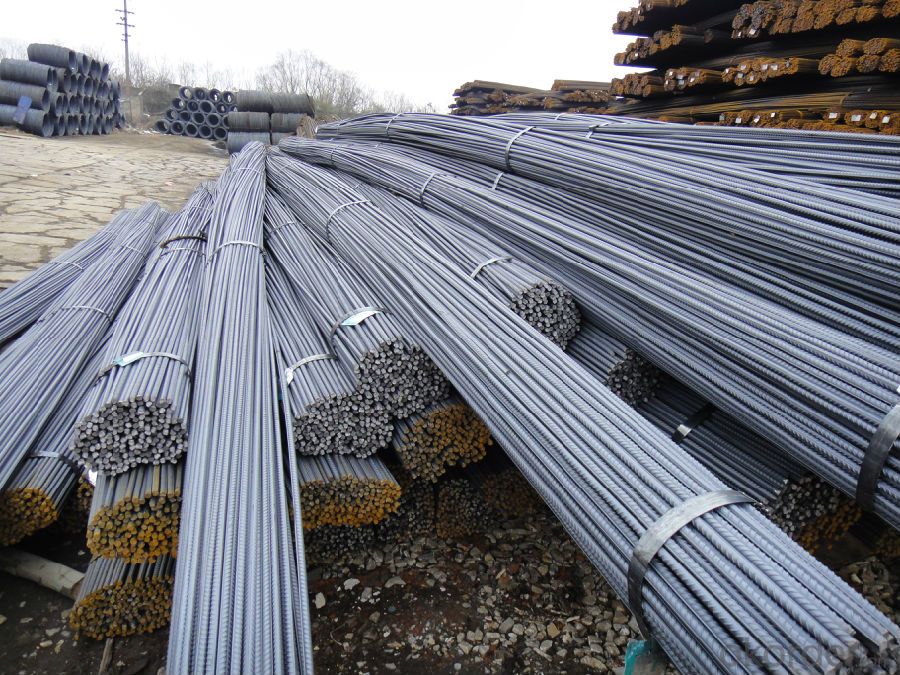
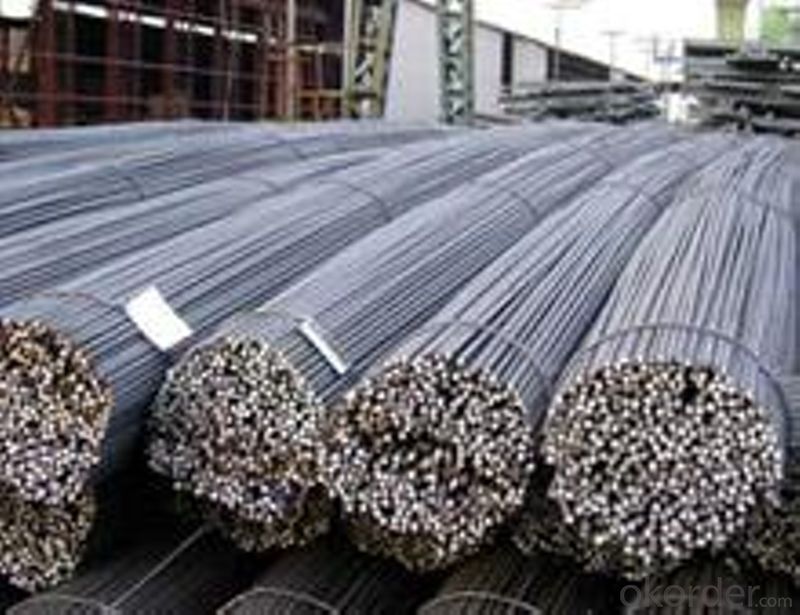
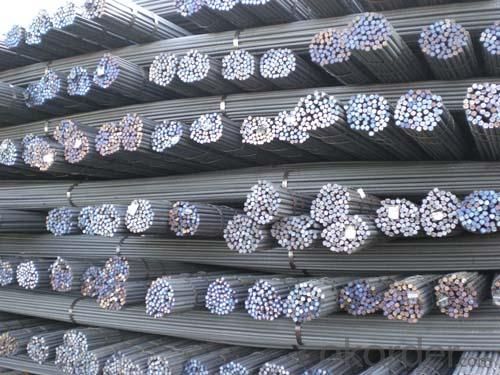
- Q: Are steel rebars suitable for use in structures with aggressive soil conditions?
- Structures facing aggressive soil conditions should generally consider the suitability of steel rebars. The specific characteristics of the soil and its potential impact on the rebars must be taken into account. Aggressive soil conditions often involve excessive moisture, acidity, or corrosive substances, which can lead to corrosion and compromise the structural integrity of the construction. To prevent corrosion, several measures can be employed. One effective approach is the use of corrosion-resistant steel rebars, including stainless steel or epoxy-coated rebars. These materials offer an additional layer of protection against aggressive soil conditions. In addition, proper design and construction techniques can help minimize the adverse effects of aggressive soil conditions on the rebars. Implementing adequate drainage systems, waterproofing measures, and protective coatings can prevent direct contact between the soil and the rebars. It is crucial to seek advice from structural engineers and soil science experts when assessing the suitability of steel rebars in structures facing aggressive soil conditions. Their expertise and recommendations are invaluable for ensuring the longevity and safety of the structure.
- Q: Can steel rebars be used in architectural or decorative concrete applications?
- Yes, steel rebars can be used in architectural or decorative concrete applications. They provide structural reinforcement and enhance the overall strength and durability of the concrete. Additionally, when properly designed and installed, steel rebars can be concealed or incorporated into the design, making them suitable for various aesthetic purposes in architectural or decorative concrete projects.
- Q: Can steel rebars be used in non-structural applications?
- Yes, steel rebars can be used in non-structural applications. They are commonly used in applications such as concrete reinforcement for sidewalks, driveways, and patios, as well as in construction projects that require additional strength and durability.
- Q: What are the factors to consider while selecting steel rebars for a project?
- Some factors to consider while selecting steel rebars for a project include the grade and quality of the steel, the required strength and durability for the specific application, the size and shape of the rebars, the availability and cost of the materials, and any specific requirements or regulations set by the project specifications or local building codes.
- Q: What are the different types of steel coatings used on rebars?
- There are several types of steel coatings used on rebars, including epoxy coatings, zinc coatings, and galvanized coatings. Epoxy coatings provide corrosion resistance and can be used in both indoor and outdoor applications. Zinc coatings, such as zinc-rich paint or zinc thermal spray, provide sacrificial protection against corrosion. Galvanized coatings involve immersing the rebar in molten zinc, providing long-lasting corrosion resistance.
- Q: Can steel rebars be used in the construction of water treatment plants?
- Yes, steel rebars can be used in the construction of water treatment plants. Steel rebars are commonly used in the construction industry to reinforce concrete structures, and water treatment plants often require robust and durable infrastructure. Steel rebars provide strength and stability to the concrete components, making them suitable for use in the construction of water treatment plants.
- Q: How are steel rebars used in reinforced concrete structures?
- Steel rebars are used in reinforced concrete structures to provide additional strength and durability. They are embedded within the concrete to resist tensile forces and prevent cracking or failure. The rebars act as reinforcement, helping to distribute the load evenly throughout the structure, making it more resistant to bending and flexing.
- Q: Do steel rebars have any impact on the fire resistance of a structure?
- Yes, steel rebars have a significant impact on the fire resistance of a structure. The use of steel rebars in reinforced concrete provides additional strength and stability to the structure, especially during a fire. Due to their high melting point and heat transfer resistance, steel rebars help to maintain the structural integrity of the building for a longer period of time, allowing occupants to evacuate safely and giving firefighters more time to control the fire.
- Q: How do steel rebars contribute to the overall stability of a bridge deck?
- Steel rebars contribute to the overall stability of a bridge deck by providing reinforcement and increasing its strength and load-bearing capacity. They help to distribute the load evenly across the deck, preventing it from sagging or collapsing under heavy traffic or other external forces. The rebars also enhance the bridge's resistance to cracking, bending, and shearing, ensuring its long-term durability and structural integrity.
- Q: How do steel rebars prevent concrete structures from collapsing?
- Reinforcement and strength are provided to concrete structures by steel rebars, which prevent their collapse. Concrete is capable of withstanding forces that compress or squeeze it, making it a strong material. However, it is not able to withstand forces that pull it apart, resulting in weakness in tension. When subjected to tension, concrete may crack and ultimately fail. To counteract these tensile forces and offer additional strength, reinforcement bars, also known as steel rebars, are typically embedded within concrete structures. These rebars are made of high-strength steel and are strategically placed to resist the pulling forces. When external forces, such as wind or seismic activity, impact a concrete structure, the rebars assist in distributing the load and resisting tension. As the concrete attempts to separate, the rebars hold it together, preventing the propagation of cracks and maintaining the structure's integrity. Additionally, the rebars enhance the overall durability and lifespan of the concrete structure. By reinforcing the concrete, they mitigate the effects of shrinkage and thermal expansion, which can lead to cracks over time. Consequently, a more stable and resilient structure is achieved, capable of withstanding various environmental and structural stresses. In conclusion, steel rebars are crucial in averting the collapse of concrete structures, as they provide the necessary reinforcement and strength to resist tension. They elevate the structural integrity, durability, and safety of concrete structures, ensuring their ability to withstand demands and fulfill their intended purpose for extended periods.
Send your message to us
6mm*28.27mm deformed steel bar deformed steel bar
- Loading Port:
- Tianjin
- Payment Terms:
- TT or LC
- Min Order Qty:
- 25 m.t.
- Supply Capability:
- 100000 m.t./month
OKorder Service Pledge
OKorder Financial Service
Similar products
Hot products
Hot Searches
Related keywords




